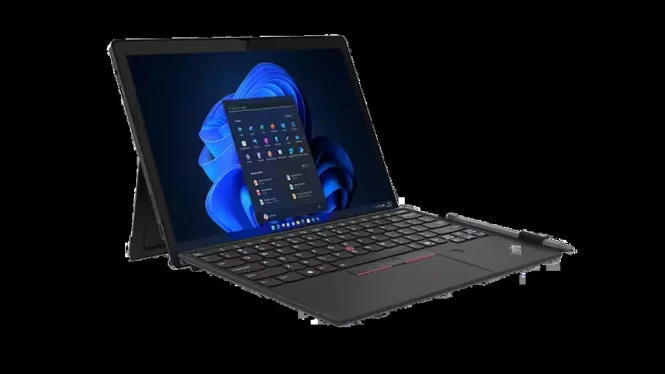In the current era where compact laptops and advanced smartphones dominate, Windows-based tablets still provide an essential edge for business professionals. These devices offer extreme portability combined with the robust performance needed to handle full Microsoft Office ecosystems effortlessly.
For those in the market for a business tablet, two notable contenders are the Lenovo ThinkPad X12 Gen 2 and the Chuwi Hi10 Max. Both cater to professional users but with distinct approaches: long-term investment versus immediate budget-friendly value.
Build Quality: Durability vs Budget Solidity
The Lenovo ThinkPad X12 Gen 2 stands out for its military-grade durability. Its magnesium-aluminum frame has passed MIL-STD-810H tests, including resistance to extreme vibration, temperature ranges from -20°C to 60°C, drops from 76 cm, humidity, and dust. This makes it ideal for construction sites, manufacturing floors, or frequent business travels where ruggedness is key.
Conversely, the Chuwi Hi10 Max features a metal body with a premium feel for its price, offering solid durability suited for office environments and regular remote meetings. However, it lacks certifications for harsh conditions and is less recommended for rugged or outdoor industrial use. For users targeting extreme resilience, the ThinkPad X12 Gen 2 clearly leads.
Display: High Resolution Meets Color Accuracy
When it comes to visuals, Chuwi Hi10 Max delivers nearly a 13-inch 3K display with a resolution of 2880 x 1920 pixels. It boasts high brightness, vibrant color reproduction, and a 3:2 aspect ratio optimized for document work and multimedia. This makes it advantageous for those needing vivid presentations and casual graphic design.
Meanwhile, Lenovo’s X12 Gen 2, while having slightly lower resolution options such as WUXGA (1920 x 1200) or 2.2K, emphasizes color precision and anti-glare technology. It typically supports 100% sRGB, well suited for prolonged editing, detailed data analysis, and work comfort under bright conditions. Hence, for spectacular visuals, Chuwi shines; for accuracy and eye comfort during extended use, ThinkPad is preferable.
Performance: Balanced Efficiency vs Business-Class Power
The Hi10 Max runs on an Intel N150 (Alder Lake-N series) processor, offering enough horsepower for everyday tasks like browsing, video conferencing via Zoom or Teams, and office productivity applications. Its 12 GB LPDDR5 RAM and 512 GB SSD enable good multitasking capabilities for its affordable price. However, it is not suitable for resource-intensive software such as video rendering or heavy CAD programs.
On the other hand, the ThinkPad X12 Gen 2 typically comes equipped with Intel Core i5 or i7 processors from the 12th or 13th generation, delivering premium performance for multitasking heavy workflows. It supports demanding business applications such as SAP, light AutoCAD, or virtual machines. Users can customize RAM from 8 to 32 GB and storage up to 2 TB, ensuring a lifespan beyond five years without performance degradation. In summary, the Chuwi is ideal for light to medium workloads, while the ThinkPad excels in demanding professional scenarios.
Keyboard and Productivity Features
Lenovo’s ThinkPad keyboards are industry standards, boasting 1.5 mm key travel and tactile feedback. This ergonomic design is essential for users who type extensively during data entry, document creation, or communications on the go. The comfortable typing experience reduces fatigue over long working hours.
Meanwhile, the Chuwi Hi10 Max includes a detachable magnetic keyboard, which is practical for portability. Although it lacks the premium feel and precision of the ThinkPad keyboard, it remains functional for quick meetings or light document editing tasks. When typing is a major productivity factor, the ThinkPad’s keyboard is the clear winner.
Pricing and Value Proposition
Price is a significant factor for many buyers. The Chuwi Hi10 Max retails roughly between $350 and $420 USD, targeting budget-conscious users such as small business owners, freelancers, or students desiring premium features without breaking the bank. The Lenovo ThinkPad X12 Gen 2, however, commands a higher price range from approximately $1,250 to $1,750 USD, reflecting its superior durability, customizable enterprise-grade performance, and extended device longevity.
Choosing Based on Needs
Professionals who frequently travel to challenging environments, require long typing sessions, or need a device that lasts beyond five years might find the ThinkPad X12 Gen 2 ideally suited to their demands. Conversely, users on a tighter budget, who mainly perform light to moderate tasks and prefer a larger, sharper screen, can benefit greatly from the Chuwi Hi10 Max.
Both tablets serve distinct user segments with no absolute winner. Choosing between them depends more on work style, usage intensity, and investment priorities rather than on specs alone. For those valuing durability and professional-grade support, the ThinkPad stands as a solid investment. For efficient, budget-friendly solutions, the Hi10 Max offers unexpected value in its class.
